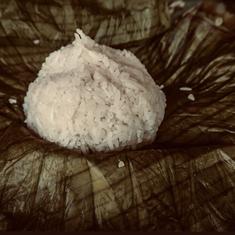The Produnova and Dipa Karmakar have become synonymous. Or, at least, there is a symbiosis, and an intimate relationship, between Karmakar and the extremes of her discipline, because that is what the Produnova, a handspring double-front somersault, an athletic feat of daring aptitude and utter audacity, is.
It’s the Mount K2 of Olympic gymnastics, a vault that is so tricky to execute that mortals refrain from attempting it, so technical, demanding many hours of perfection in training, that, even among the elite athletes, even at the quadrennial high mass of sports, there is a reluctance, and a nagging fear, to execute the Produnova.
"I like risk"
Not so where Karmakar is concerned. Whisper it, but the Produnova is called the “vault of death”. It has the highest degree of difficulty in gymnastics, a 7.0. The athlete is required to generate sufficient height to complete the rotation. The twist complicates finding the ground and landing. The danger involved is a marked shift away from the ancient Greek concept of a sound mind in a sound body that Pluto, Aristotle and Homer all advocated.
The Produnova risk entails life-threatening injuries, when a gymnast over-rotates and lands on their neck. On Saturday, 26-year-old French gymnast Samir Ait Said snapped his tibia on the vault. There is an argument to ban the Produnova and other aligned daredevils moves; the scoring system has been the catalyst for gymnasts to plunge the depths of extremism and push their body. Leading American gymnasts have staunchly rejected the notion of the Produnova vault.
“I like risk,” smiled a disarming Karmakar with gleaming teeth in a packed mixed zone after her qualification session at the Rio Arena on Sunday, where she became the first Indian gymnast to enter the Olympics apparatus finals. Karamakar’s training session minimises that risk. Out of competition, she trains every weekday for eight hours, divided across two sessions under the relentless encouragement and slick guidance of long-time coach Bishweswar Nandi. He came up with the idea of the Produnova. Training and mentorship turn fear into confidence.
"Mastering the most difficult of them all"
The new approach has catapulted the 22-year-old into a different stratosphere, both in India and abroad. Together with Yamilet Pena, Fadwa Mahmoud, Oksana Chusovitina, and Yelena Produnova, the Russian gymnast who created the move, Karmakar is the only gymnast to master it. She is the first gymnast to represent India at the Olympic Games since Tokyo in 1964. Karmakar revealed that the world champion came to talk to her before her competition in Rio.
The hype and bout of stardom have not flustered Karmakar. She remains unperturbed and down to earth. She entered the gymnasium, realising this was the pinnacle of her career, and also, at once, the zenith for Indian gymnastics. Everything about the big razzle-dazzle is fresh and intriguing to her.
Karmakar started in subdivision three with Barbora Mokosva from Russia, Ana Gomez from Guatemala, Emma Larsson from Sweden and Thi Ha Phan from Vietnam. “I was both nervous and excited as I had never performed in front of such a crowd,” she commented.
As the moment approached for the Produnova vault, Karmakar stretched. Then her coach spoke a few last words. “You do your best,” said Nandi, according Karmakar. Then she chalked her hands. Twice, she jumped, swivelled in the air and landed on her feet.
She lost balance slightly during her first attempt, landing low, but the jury was appreciative of Karmakar’s exertion: in her first attempt she scored 15.100 with a difficulty score of 7.000 and an execution score of 8.100. Her second attempt, a Tsuk double full twist with step to the side, was rewarded with a score of 14.600, broken down as a difficulty score of 6.000 and an execution score of 8.600.
“I would have been ecstatic with a better score,” said Karmakar.
It was of little importance – neither was the fact that the jury under-appreciated Karmakar’s performance at the uneven bar and that she struggled for both composure and rhythm on the balance beam – because Karmakar has galvanised gymnastics in India, coming from a period when she trained without shoes and minimal training gear. Her mere presence in Rio is an absolute triumph, her place in the apparatus final historic.
Karmakar produnova pic.twitter.com/3gtBoB2Vl5
— The All Around (@theallaround) August 7, 2016










